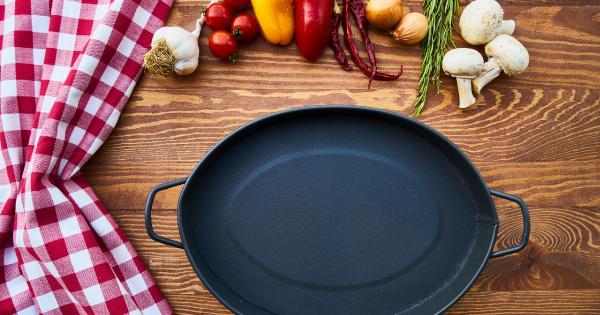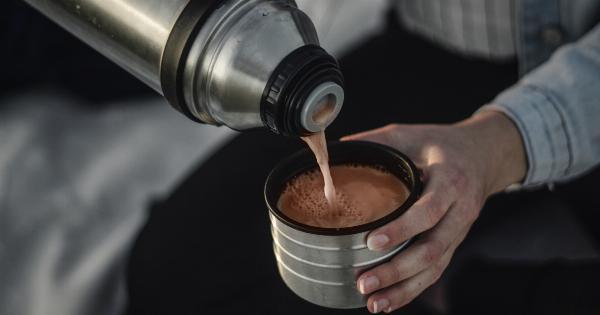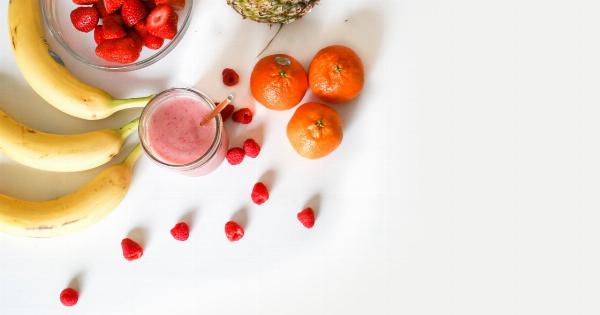Iron is an essential mineral that plays a vital role in various bodily functions. It is responsible for producing hemoglobin, a protein in red blood cells that carries oxygen from the lungs to different parts of the body.
Iron also supports muscle function, immune system health, and cognitive development. However, many people, especially women and vegetarians, struggle to meet their daily iron needs. In this article, we will explore easy and effective ways to boost your iron levels naturally.
1. Consume Iron-Rich Foods
The first and most crucial step in increasing your iron levels is to include iron-rich foods in your diet. These include:.
- Red meat: Beef, lamb, and liver are excellent sources of heme iron, which is more easily absorbed by the body.
- Poultry: Chicken and turkey are also good sources of heme iron.
- Seafood: Shellfish, particularly oysters, mussels, and clams, are rich in iron.
- Legumes: Beans, lentils, and chickpeas are high in non-heme iron, which is not as easily absorbed but can still contribute to your iron intake.
- Leafy greens: Spinach, kale, and swiss chard are packed with iron and other essential nutrients.
- Nuts and seeds: Pumpkin seeds, cashews, and almonds provide a good amount of iron.
- Fortified cereals and bread: Many breakfast cereals and bread are fortified with iron, making them a convenient option.
2. Pair Iron-Rich Foods with Foods High in Vitamin C
Vitamin C enhances the absorption of non-heme iron, the type of iron found in plant-based foods. To maximize your iron absorption, combine iron-rich foods with those high in vitamin C. Some examples include:.
- Citrus fruits: Oranges, lemons, and grapefruits are rich in vitamin C.
- Bell peppers: Red, yellow, and green bell peppers are excellent sources of vitamin C.
- Strawberries: These delicious berries are not only packed with vitamin C but also provide fiber.
- Tomatoes: Whether eaten raw or cooked, tomatoes are a versatile source of vitamin C.
- Broccoli: This cruciferous vegetable offers both iron and vitamin C.
3. Cooking in Cast Iron Cookware
Cooking certain foods in cast iron cookware can significantly boost your iron intake. Acidic foods, such as tomatoes and other fruits, absorb iron from the cookware, increasing the iron content of the dish.
Using cast iron skillets or pans regularly can contribute to your overall iron levels.
4. Avoid Iron Blockers
While it’s important to consume iron-rich foods, it’s equally important to avoid factors that inhibit iron absorption.
Some substances can interfere with iron absorption, and it’s best to limit or avoid them if you’re concerned about your iron levels. These include:.
- Coffee and tea: The tannins present in coffee and tea can hinder iron absorption. It’s advisable to consume these beverages separately from iron-rich meals.
- Calcium-rich foods: Dairy products, such as milk, cheese, and yogurt, contain calcium that can inhibit iron absorption. It’s best to consume calcium-rich foods separately or choose non-dairy alternatives.
- Phytates: Found in whole grains and legumes, phytates can bind to iron and reduce its absorption. Soaking, fermenting, or sprouting these foods can help reduce phytate levels and increase iron absorption.
- Oxalates: Foods like spinach, beet greens, and rhubarb contain oxalates, which may interfere with iron absorption. However, these foods also provide other essential nutrients, so it’s not necessary to exclude them from your diet.
5. Be Mindful of Iron Supplements
If you’re unable to meet your iron needs through diet alone, your healthcare provider may recommend iron supplements. However, it’s crucial not to self-diagnose or start taking iron supplements without professional advice.
Iron supplements should only be used as directed by a healthcare professional, as excessive iron intake can lead to undesirable side effects.
6. Consume Fermented Foods
Fermented foods like sauerkraut, kimchi, and kefir can indirectly support iron absorption. They promote a healthy gut environment, allowing for optimal nutrient absorption, including iron.
7. Cook with Cumin
Cumin is a spice with a rich history and a distinctive flavor. It contains a compound called phytocumin, which has been shown to enhance iron absorption. Incorporating this aromatic spice into your cooking can be a tasty way to increase your iron levels.
8. Monitor Your Iron Levels
If you suspect you have low iron levels or are at risk of iron deficiency, it’s essential to consult with your healthcare provider. Blood tests can determine your iron status and help guide you on the appropriate steps to take.
9. Avoid Excessive Tea and Coffee Consumption
We mentioned earlier that the tannins in tea and coffee can interfere with iron absorption. It’s essential to moderate your intake of these beverages, especially when consuming iron-rich foods or taking iron supplements.
10. Prepare Meals in a Balanced Way
When planning your meals, aim for a balanced combination of iron-rich foods, vitamin C sources, and other essential nutrients. A well-rounded diet ensures you receive the necessary components for optimal iron absorption and overall health.
Conclusion
Boosting your iron levels can be achieved through simple dietary and lifestyle changes. By incorporating iron-rich foods, pairing them with vitamin C sources, and paying attention to cooking techniques, you can effectively optimize your iron absorption.
It’s crucial to maintain a balanced approach and consult with a healthcare professional if you suspect iron deficiency or plan to take supplements. Take charge of your iron levels and prioritize your overall well-being.































